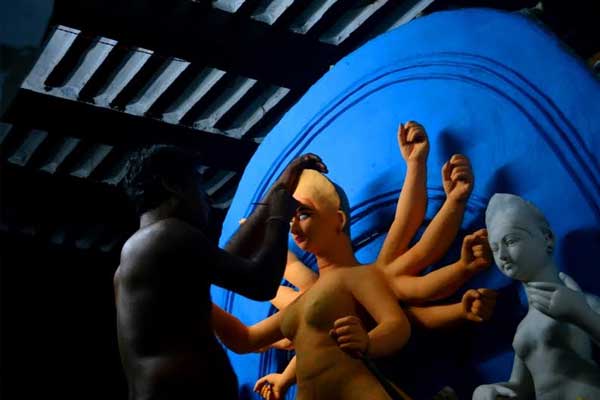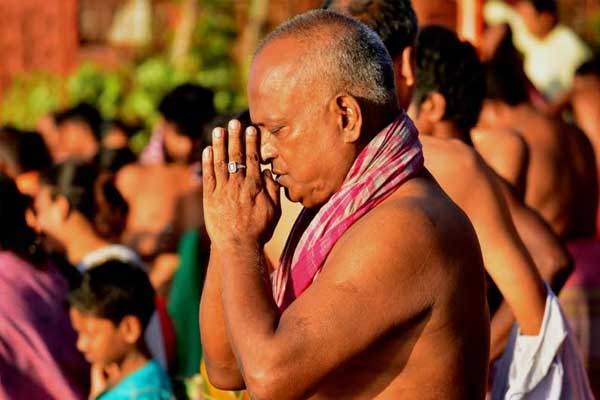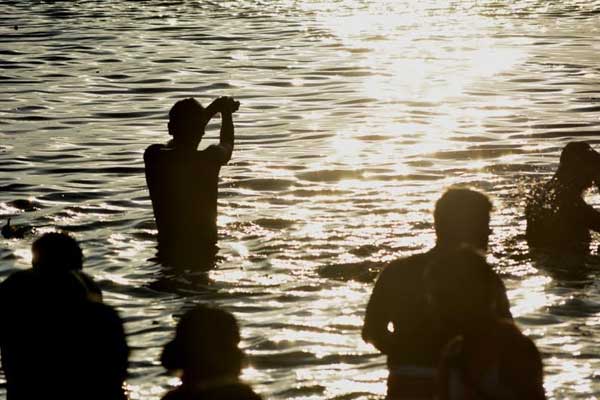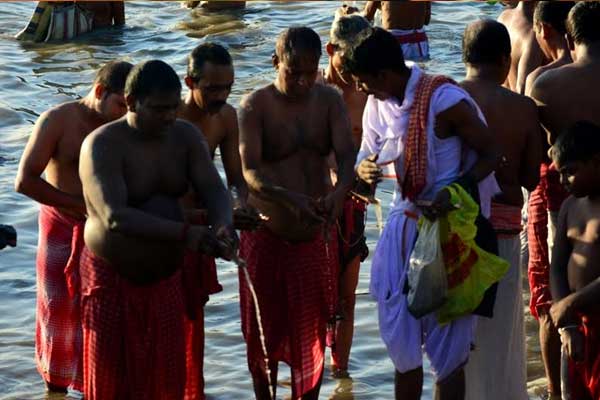
Bengal observes Mahalaya, gets ready for Durga Puja
While the rest of India will start celebrating Navratri (the Festival of Nine Nights) to worship nine different forms of Goddess Shakti, for Bengalis, Mahalaya is the harbinger of Durga Pujo, a much awaited festival.
The day marks the commencement of Devipaksha (Fortnight of the Goddess).
 In West Bengal, day breaks at 4am on Mahalaya by listening to the famous radio broadcast Mahishasur-Mardini, a recital conceptualised by the late Birendrakrishna Bhadra.
In West Bengal, day breaks at 4am on Mahalaya by listening to the famous radio broadcast Mahishasur-Mardini, a recital conceptualised by the late Birendrakrishna Bhadra.
It is perhaps the only day in the year when Bengali families bring out their transistors and tune in to All India Radio (Akashvani) Kolkata for the broadcast.
 For Bengalis, Ma Durga is not only a symbol of power but also a daughter of the family.
For Bengalis, Ma Durga is not only a symbol of power but also a daughter of the family.
It is the occasion, when Goddess Durga along with her four children (Laxmi, Saraswati, Kartik and Ganesh), she makes her annual trip to her parental home on earth.
For the rest of India, Navratri culminates in Dussehra on the 10th day, and is typically celebrated by burning effigies of Ravana and Kumbhakarna, to signify the win of good over evil.
Bengalis, on the day of Dashami (the 10th day), take the idols to the nearest waterbody for immersion, which signifies the return of the Goddess to her husband's home in the Himalayas.
 Since Mahalaya signals the countdown for the main five days of Durga Puja, 'Puja' organisers speed up the last minute preparations, especially getting the marquees ready adding finishing touches to the idols and illuminations, etc.
Since Mahalaya signals the countdown for the main five days of Durga Puja, 'Puja' organisers speed up the last minute preparations, especially getting the marquees ready adding finishing touches to the idols and illuminations, etc.
The day, being observed as a holiday in many organisations and institutions, paves the way for last minute shopping in Kolkata.
The market places witness a surfeit of crowds.
Even food joints and restaurants are no less crowded as festive frenzy Kolkatans commence their celebrations from day one of Devipaksha.
This is also the time when visitors flock to Kolkata to immerse themselves in the festive spirit.
Support Our Journalism
We cannot do without you.. your contribution supports unbiased journalism
IBNS is not driven by any ism- not wokeism, not racism, not skewed secularism, not hyper right-wing or left liberal ideals, nor by any hardline religious beliefs or hyper nationalism. We want to serve you good old objective news, as they are. We do not judge or preach. We let people decide for themselves. We only try to present factual and well-sourced news.







